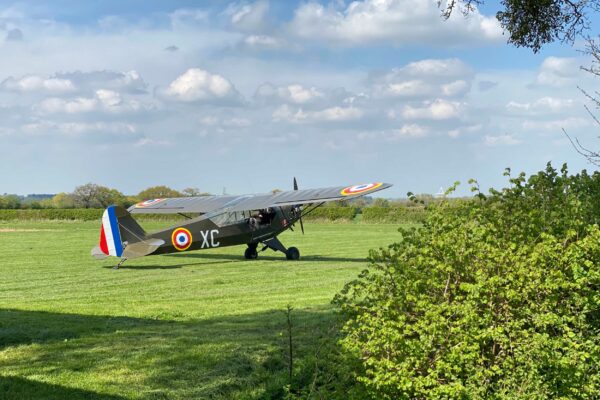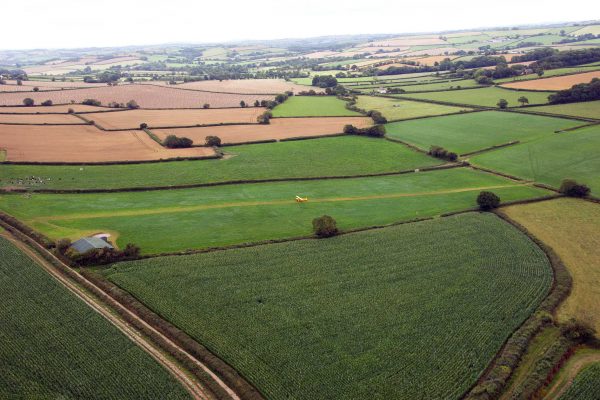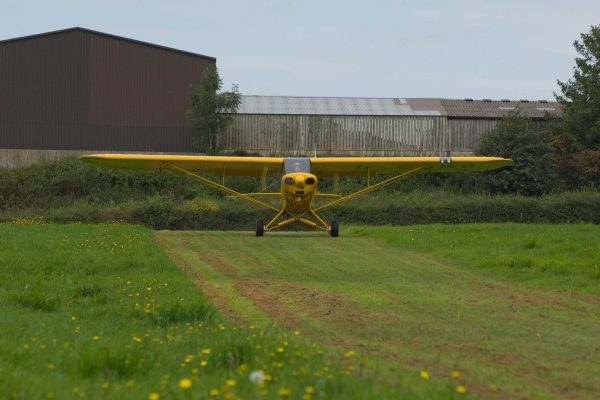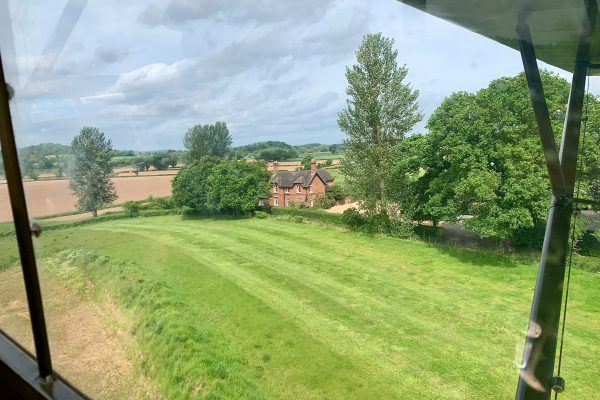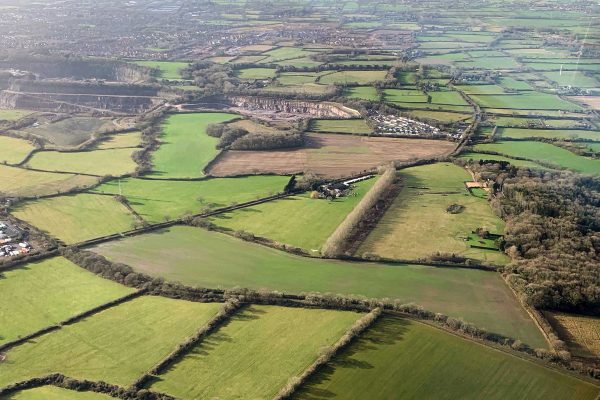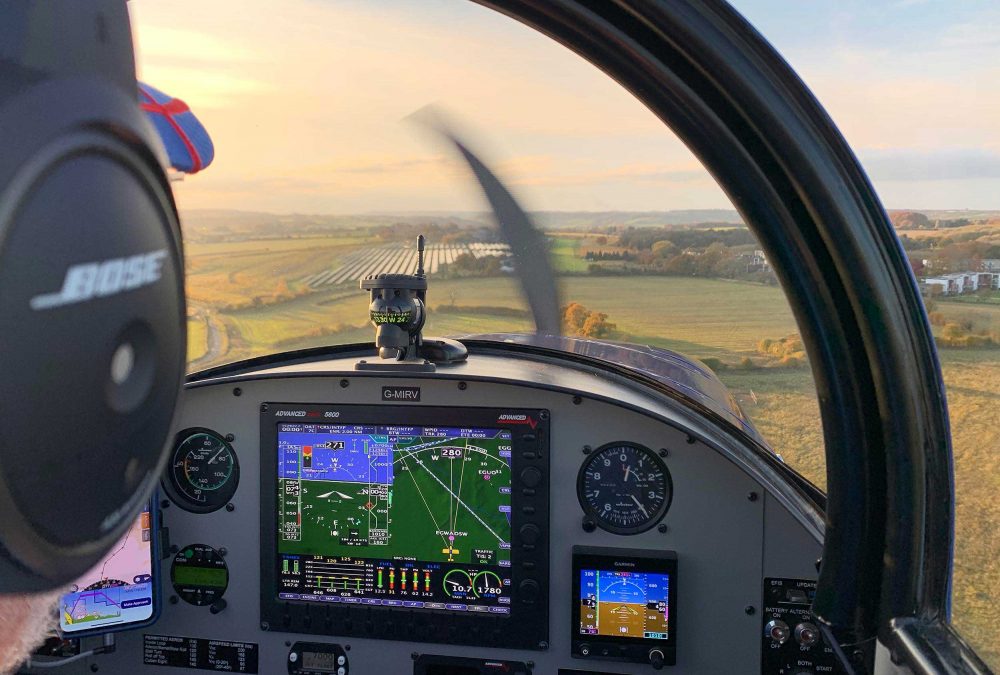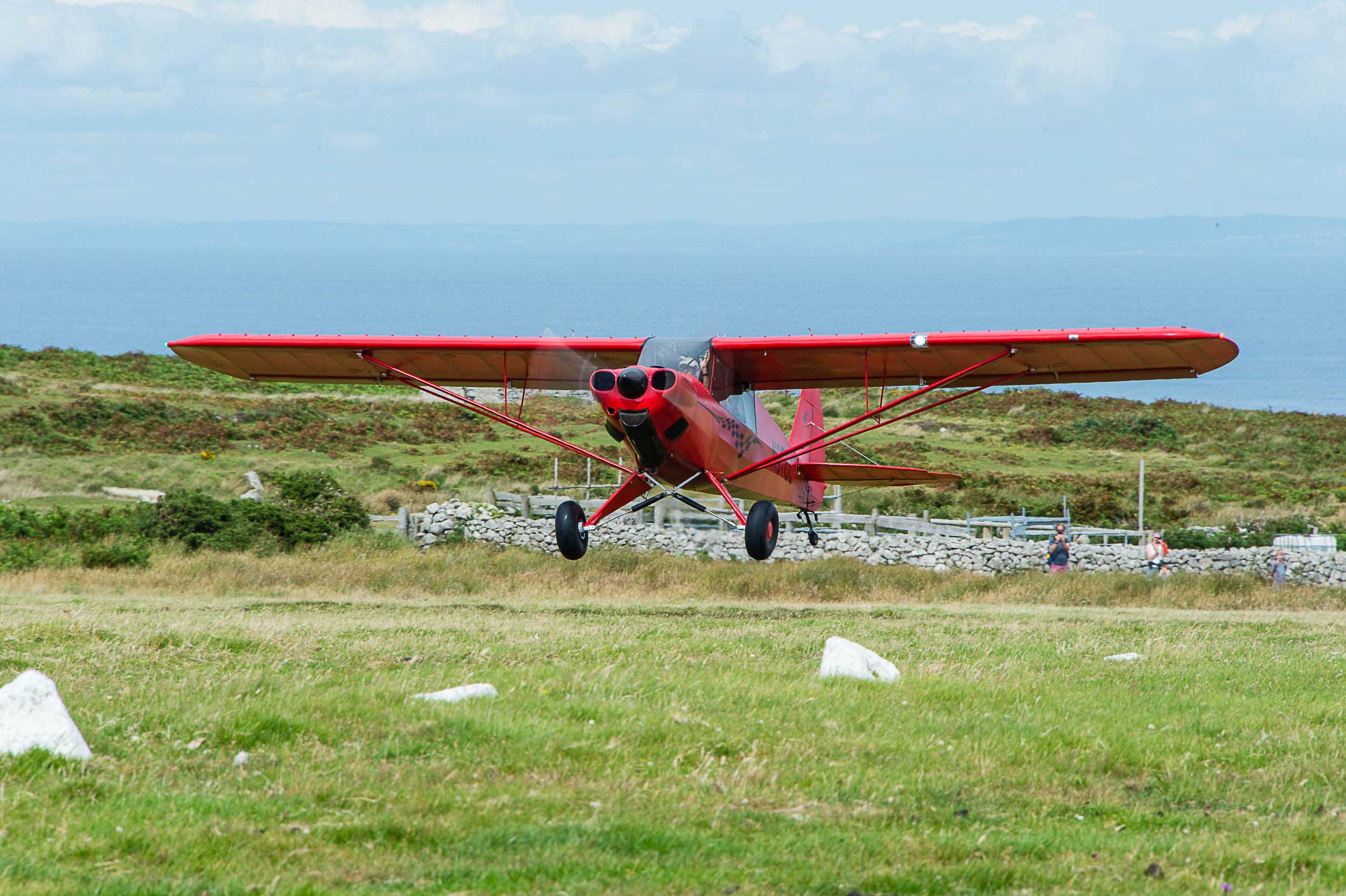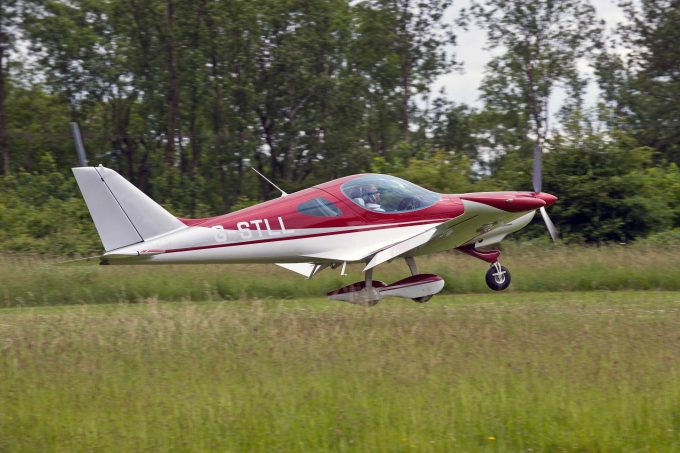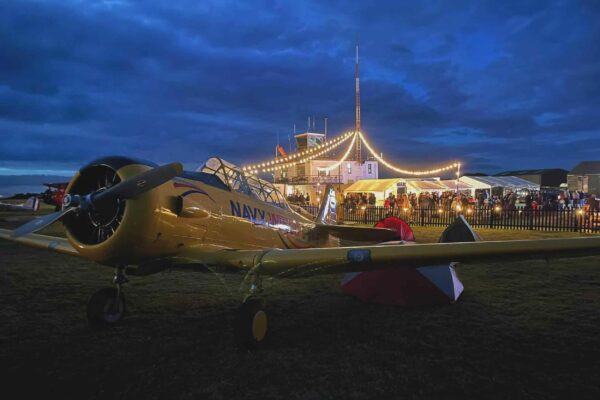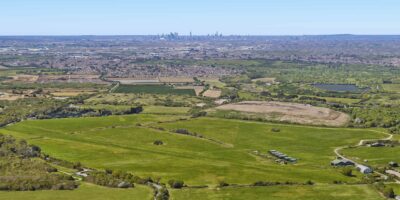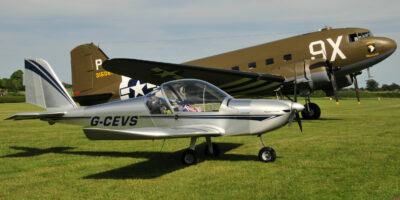“It’s so tempting on a lovely summer’s day, to say ‘let’s go and visit that farm strip’. And, to be fair, some of them, you might be able to do that and be perfectly fine. But your local flying club will have an instructor who’s landed on grass before and they can just take you to go and do a couple of circuits on a grass runway.”
This seemed a good moment to admit that I learned to fly at RAF Henlow which is all grass and the surfaces were good but, “It was finding the airfield that was hard.”
Matt: “That’s a really good point. Because, particularly in the summer, when everything’s green, they do merge into one and you can find yourself lining up with the wrong field.”
There were two more hazards which I hadn’t spotted up to this point. First was the wall of trees at the end of the strip.
Matt: “If you’re used to flying out of a nice long runway with clear departure and no obstacles, all of a sudden you’re flying towards a wall of trees that might lead you to a premature rotation. One of the fun things is getting people to fly towards that with reference to their airspeed, not fixating on the obstacles.
“Farm strip flying is brilliant because it forces you to operate to a higher standard to learn a new set of skills and use techniques that actually expand your capacity.”
Just then, a completely unexpected hazard appeared. A van just drove across the runway, from one side to the other. I spluttered to Matt, “Did you see that van?”
Extra threats
Matt: “Oh, yes, there’s a road crossing about a quarter of the way from the end. It’s a good example of what you would never see at a licenced airfield. You need to have an awareness of all these extra factors, all these extra threats, if you like. The CAA loves ‘threat and error management’ – what extra things are going to affect our operation. And that’s kind of what the farm strip course is all about.
“Supposedly, you’re on your take-off roll and you’ve reached this point. It’s probably about the earliest you could see that van. What would you do? One of the things I find people lack is a standard brief at the start of the day. ‘This is what I’m going to do at this point, if I’m not airborne’. ‘This is what I’m going to do if the engine quits at this point on departure’. That’s not really farm strip specific, although it becomes a lot more relevant.
“I flew out of here yesterday and there were pheasants all over the runway. What am I going to do if all those pheasants suddenly fly up at me, and it causes me to have an engine failure?
“It’s about setting bottom lines: this is the last point at which I’m going to make this decision. For example, on a grass runway like this, you want to make sure that you’ve got the right airspeed by a certain point, or you reject the take-off.
“Going back to the road, I’m at this point. I’m doing maybe 40kt. I would probably, at this point, abort the take-off.
“These are not dedicated airfields designed with pilot safety in mind, they are a runway and somewhere for us to land. They might have lots of different factors, obstacles, different runway surface conditions, funny little characteristics, like roads going across it. They are riskier environments. And that’s why people should seek training.”



